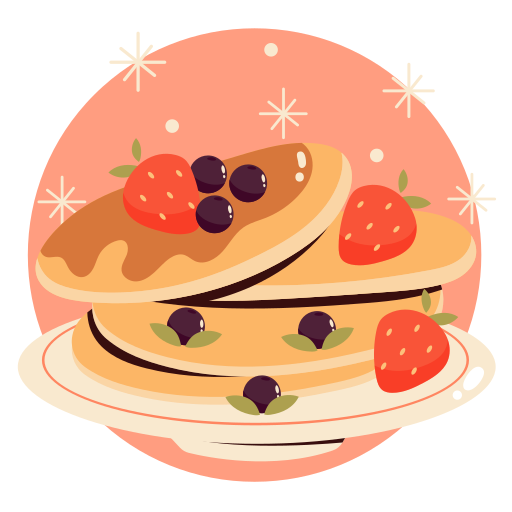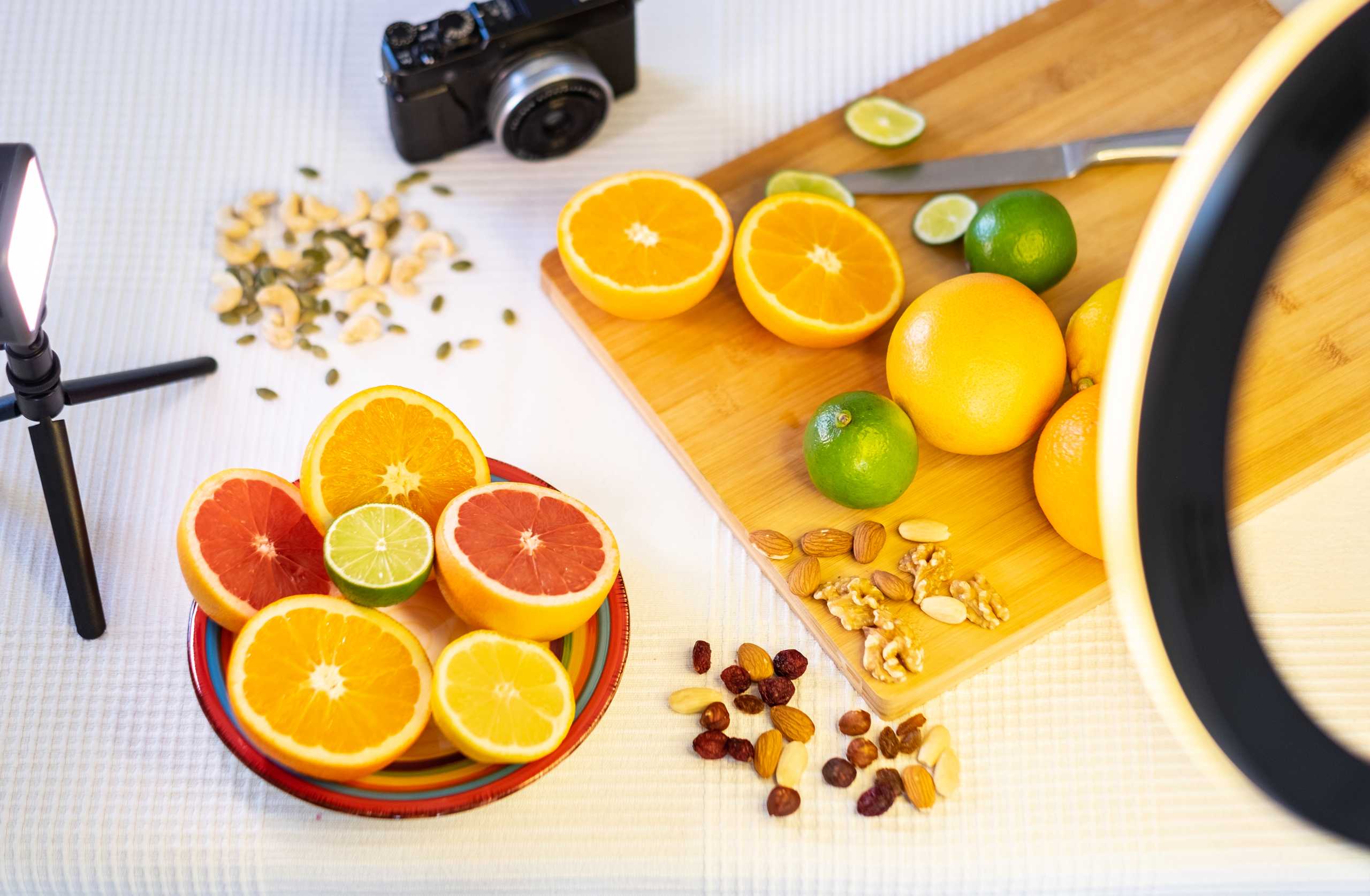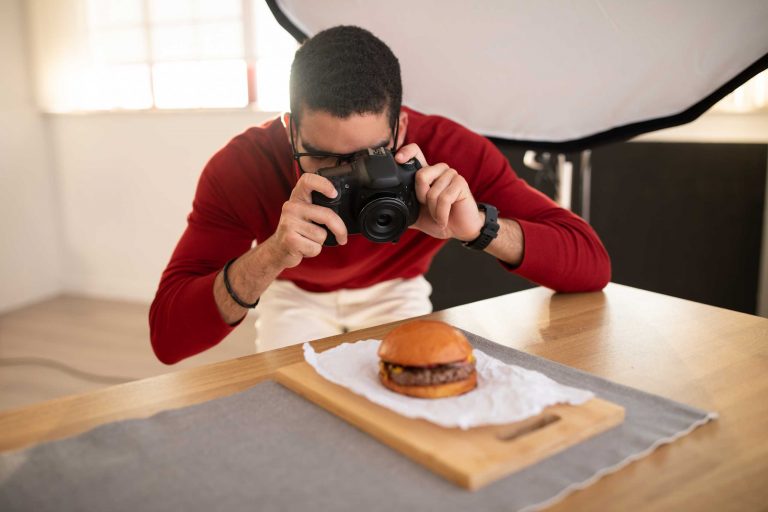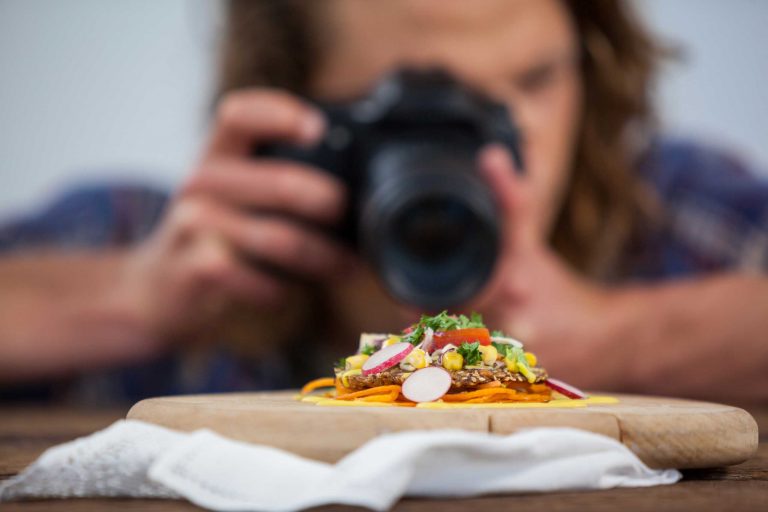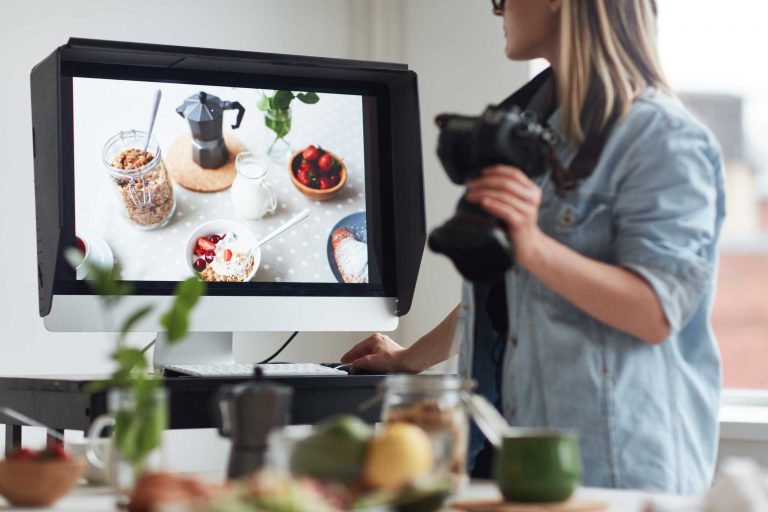Composing Crave: How to Build Food Photos That Make You Hungry
A great food photo doesn’t just show you what’s on the plate — it pulls you into the moment. You don’t just see the dish, you feel the crunch, smell the herbs, hear the simmering pan.
That’s the power of composition.
And it’s about far more than symmetry.
Let’s dive into how you can design your frame to evoke appetite, emotion, and story — with or without a perfect plate.
1. Start with the Story
Before moving a fork or grabbing your camera, ask yourself:
What is this dish saying?
Is it cozy and homemade? Luxurious and plated to perfection? Bright and summery?
Your composition should reflect that mood — and build everything else around it.
- For rustic comfort: go looser, more casual — crumbs, linen folds, steam.
- For fine dining: go tighter, more polished — clean edges, symmetry, neutral backdrops.
The plate is your subject. But the story — that’s the soul.
2. Rule of Thirds (Break It)
Yes, the classic grid works. Place key elements (like the focal point of a dish) along those thirds for balance. But don’t be afraid to break the rule once you understand it.
Centering a messy burger can add drama. Off-setting a slice of cake can lead the eye through layers of icing. The key is intent — not symmetry for the sake of it.
Think of your camera as a stage. Not everything needs to be in the spotlight.
3. Use Negative Space
Don’t be afraid of emptiness.
Let your food breathe. A blank space — a slice of background, an untouched napkin, a plate half out of frame — can highlight the subject better than cluttered details ever could.
Negative space adds luxury. It whispers instead of shouts.
It says, Look here. This is the bite that matters.
4. Guide the Eye
Everything in your frame should lead to something.
Use elements like cutlery, shadows, sauce drizzles, or even fingers reaching into the shot to guide the viewer’s eye toward the star ingredient.
You can also layer depth — placing a blurred item in the foreground, or using props behind the plate — to draw attention inward and build dimension.
5. Add Life to the Scene
Flat lays are fine. But when you add a human touch — a spoon in mid-air, hands placing garnishes, a napkin just folded — it brings the image to life.
Movement and imperfection add emotion. Suddenly, it’s not just food.
It’s a moment around the food.
6. Practice Minimal Styling
Don’t overdo the props.
Too many items compete with the dish. A textured cloth, a rustic spoon, a dash of pepper — that’s enough. Every extra piece should serve the story, not distract from it.
Edit your frame like a chef edits a recipe.
Leave only the flavors that matter.
Final Thoughts
Composition isn’t just about where things go — it’s about how they feel.
A great food photo is composed not only with objects, but with intention, emotion, and appetite. Play with space. Lead the eye. Capture a bite not just of food — but of story.
